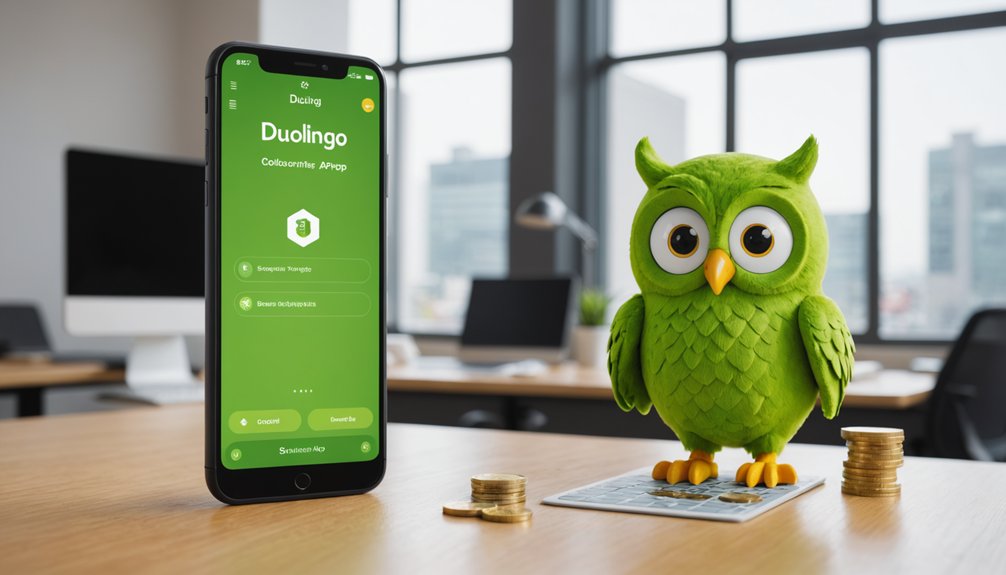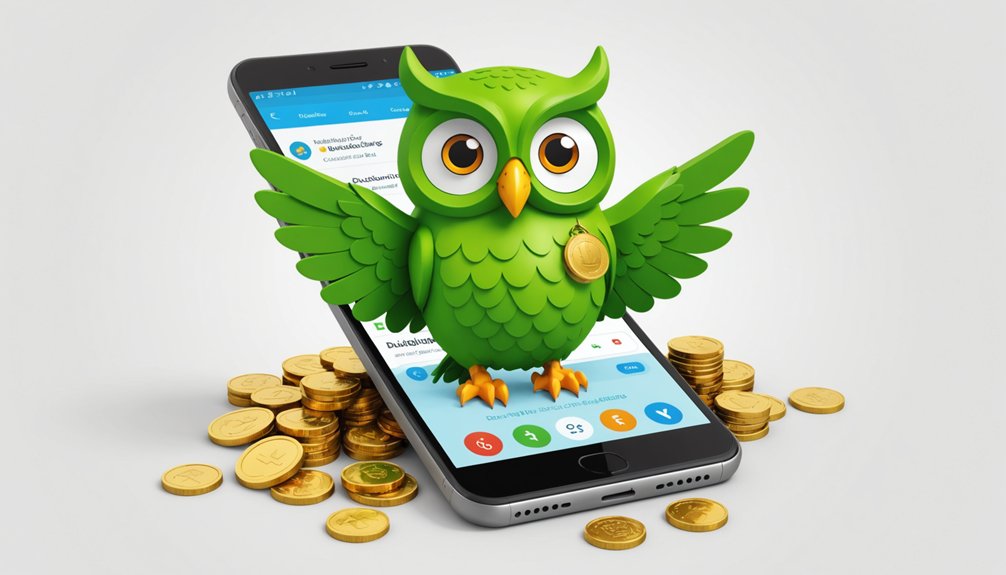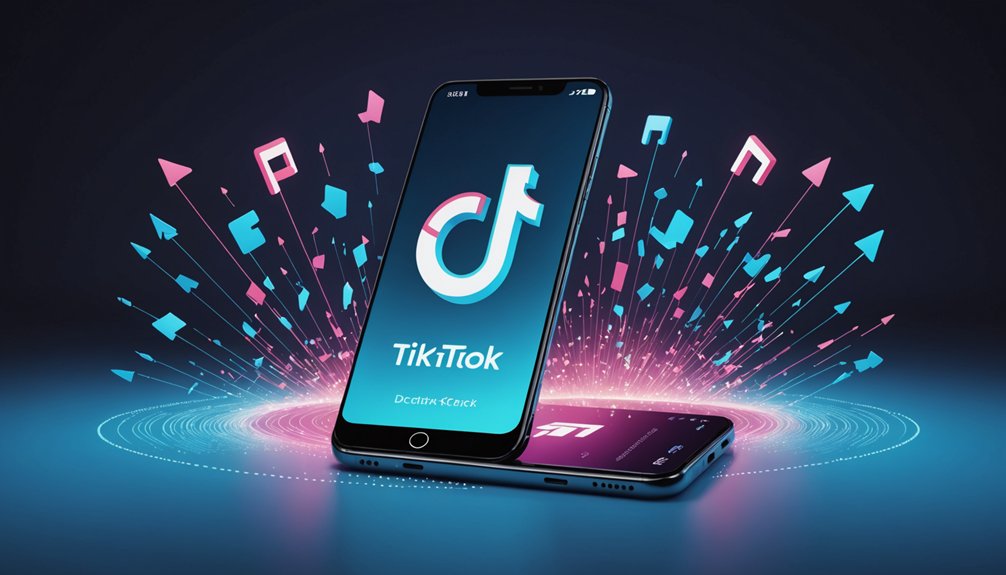Duolingo monetizes primarily through premium subscriptions—Super Duolingo and Duolingo Max—which remove ads and offer perks like unlimited hearts and offline access. The app generates roughly $500 million annually with subscriptions forming its revenue backbone. Advertising contributes less than 8%, while language certification tests and in-app purchases provide additional income streams. Their freemium model hooks users with free content, then tempts them with enhanced features. The secret sauce? Over 10,000 A/B tests perfecting that "just one more lesson" feeling.

While many people enjoy learning new languages for free on Duolingo, the company has masterfully built a $7.7 billion business from what appears to be a simple educational app. It's a freemium model that works. Most users never pay a dime, yet Duolingo generates approximately $500 million annually. Pretty impressive for teaching you how to say "the cat drinks milk" in Spanish.
The backbone of Duolingo's revenue comes from premium subscriptions. Super Duolingo removes those annoying ads, gives offline access, and provides unlimited hearts so users can make mistakes without getting kicked out. Then there's Duolingo Max at a whopping $30 monthly, offering AI-powered role-playing with chatbots. Because apparently talking to robots is the future of language learning. The company strategically focuses on transitioning users from monthly to annual plans to increase retention and maximize revenue per user. The app's mobile payment system streamlines the subscription process, making it effortless for users to upgrade their accounts.
Advertising still accounts for less than 8% of overall revenue. Those little banner ads add up, though. In-app purchases let impatient learners buy extras, while language certification tests provide another revenue stream. People pay real money for official tests that actually count in the real world. The platform's neural networks power its intelligent advertising system.
Duolingo's genius lies in keeping users hooked. They've turned language learning into a game, complete with points, streaks, and leaderboards. Miss a day? Prepare for guilt-trip notifications. Their AI algorithms know exactly when to ping you for maximum effect, boosting retention by 3%. They conduct over 10,000 A/B tests with a portion of their user base to continuously refine the experience. They're basically digital personal trainers with a psychology degree.
The company dominates the market, standing approximately 12 times larger than Babble, its nearest competitor. COVID-19 was a goldmine for Duolingo, with lockdowns driving massive user growth. Nothing like a global pandemic to make people finally commit to learning Italian.
Underneath it all runs sophisticated technology. They're constantly running A/B tests and tweaking their machine learning algorithms. All to perfect that delicate balance: keeping free users engaged enough to stick around, while tempting just enough of them to pay up. Language learning as a service, perfected.
Frequently Asked Questions
How Many Active Users Does Duolingo Currently Have?
Duolingo boasts a massive user base. Currently, the platform has 103 million monthly active users as of 2024, up from just 30 million in 2019. That's explosive growth.
Daily active users? 34.1 million. These language learners are dedicated, spending about 30 minutes daily on the app. Pretty impressive numbers for a company teaching people to say "the cat drinks milk" in multiple languages.
Users span 41 languages with 100+ courses available.
What Percentage of Duolingo Users Convert to Paid Subscribers?
Despite Duolingo's massive daily user base, only about 9% actually open their wallets for premium services.
That's the cold, hard truth. The company has managed to convert roughly 9.5 million users into paid subscribers by the end of Q4 2024. Not bad, actually.
They've leveraged AI, endless A/B testing, and those addictive gamification features to nudge free users toward subscriptions.
Money doesn't grow on digital language trees, folks.
How Does Duolingo's Profitability Compare to Other Educational Apps?
Duolingo crushes it financially compared to competitors. With $748 million in 2024 revenue (up 40.8%) and actual profits ($24 million in Q1 2024), they're outperforming many edtech players still burning cash.
Their freemium model works. Period. While Rosetta Stone and Babbel struggle for relevance, Duolingo's 103 million monthly users translate to serious cash.
Their subscription-heavy revenue mix and gamification strategy? Pretty much genius in the educational app space.
Does Duolingo Sell User Language Learning Data to Third Parties?
Duolingo does share user data with third parties, but not explicitly selling learning patterns. They share information with advertising networks and analytics services—it's right there in their policies.
Not exactly a secret. The company monetizes through ads, subscriptions, and language tests instead. They implement data protections, sure, but your usage information definitely gets passed around.
Users can control some aspects of their data, if they bother to look.
What Are Duolingo's Expansion Plans Beyond Language Learning?
Duolingo's branching out big time.
They've launched a math app with the same game-like approach that made languages addictive.
Music lessons are coming soon too, featuring an on-screen keyboard for note reading.
Their Birdbrain AI personalizes everything.
The strategy? Simple. Take what worked for languages and apply it elsewhere.
From $70 million in 2019 to $531 million in 2023 – clearly, they're onto something.
More subjects are definitely in the pipeline.




